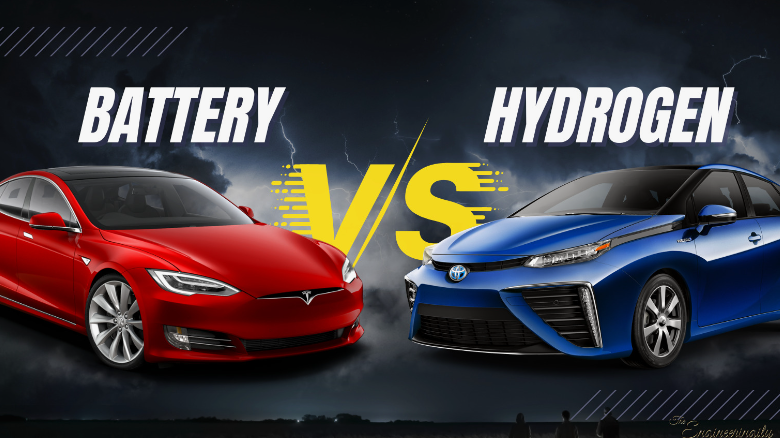
In the realm of automotive innovation, the quest for sustainable transportation solutions has led to the emergence of two prominent contenders: hydrogen-powered cars and battery electric vehicles (BEVs). As the world grapples with the challenges of climate change and environmental degradation, the need for clean, efficient modes of transportation has become increasingly urgent. In this article, we delve into the key differences and similarities between hydrogen-powered cars and BEVs, exploring their technology, infrastructure, environmental impact, and market viability.
Understanding Hydrogen-Powered Cars
Hydrogen-powered cars, also known as fuel cell vehicles (FCVs), operate by harnessing the chemical reaction between hydrogen and oxygen to generate electricity, which powers an electric motor. This process produces only water vapor and heat as byproducts, making hydrogen cars a promising zero-emission alternative to traditional internal combustion engine vehicles.
One of the primary advantages of hydrogen-powered cars is their fast refueling time, which is comparable to conventional gasoline vehicles. This attribute addresses the issue of range anxiety commonly associated with electric vehicles, as drivers can quickly replenish their hydrogen tanks and continue their journeys with minimal downtime.
However, the widespread adoption of hydrogen-powered cars faces significant challenges, particularly in terms of infrastructure. Unlike battery electric vehicles, which can be charged at home or at public charging stations, hydrogen fueling stations are currently limited in number and availability, posing a barrier to mainstream acceptance.
The Rise of Battery Electric Vehicles
In contrast to hydrogen-powered cars, battery electric vehicles rely on rechargeable lithium-ion batteries to store and deliver electricity to an electric motor. The proliferation of BEVs in recent years can be attributed to advancements in battery technology, which have improved energy density, driving range, and affordability.
BEVs offer several advantages over traditional internal combustion engine vehicles, including lower operating costs, reduced greenhouse gas emissions, and superior performance. With a growing network of charging infrastructure worldwide, electric vehicle owners have greater flexibility and convenience when it comes to recharging their vehicles.
Moreover, the declining costs of lithium-ion batteries have contributed to the affordability and accessibility of BEVs, making them an attractive option for environmentally conscious consumers.
Comparing Infrastructure and Accessibility
One of the key considerations in evaluating the viability of hydrogen-powered cars versus battery electric vehicles is the availability of infrastructure. While BEVs benefit from an extensive network of charging stations, hydrogen fueling stations remain relatively scarce, particularly outside of urban centers.
In regions where hydrogen fueling infrastructure is limited, the practicality of owning a hydrogen-powered car may be compromised. On the other hand, battery electric vehicles offer greater accessibility, as charging stations can be installed in homes, workplaces, and public spaces, enabling drivers to recharge their vehicles conveniently.
In the context of cash for cars Ipswich(free car removal), the accessibility of infrastructure plays a crucial role in determining the feasibility of transitioning to hydrogen-powered or electric vehicles. As consumers weigh their options, considerations such as charging infrastructure and range capabilities are paramount in making informed decisions about their vehicle purchases.
Environmental Impact and Sustainability
Both hydrogen-powered cars and battery electric vehicles are touted for their environmental benefits compared to conventional gasoline-powered vehicles. However, the sustainability of these technologies depends on various factors, including the source of electricity or hydrogen production.
In the case of battery electric vehicles, the environmental impact largely hinges on the carbon intensity of the electricity grid. Regions with a high proportion of renewable energy sources, such as solar, wind, and hydroelectric power, can significantly reduce the carbon footprint of electric vehicles over their lifecycle.
Similarly, the production of hydrogen for fuel cell vehicles can be carbon-intensive if derived from fossil fuels. However, advancements in renewable hydrogen production, such as electrolysis powered by renewable energy sources, offer the potential for emissions-free hydrogen production, enhancing the sustainability of hydrogen-powered cars.
Market Viability and Consumer Preference
The market viability of hydrogen-powered cars and battery electric vehicles is influenced by various factors, including technological advancements, government policies, and consumer preferences. While BEVs have gained considerable traction in recent years, hydrogen fuel cell vehicles are still in the nascent stages of commercialization.
In markets such as cash for cars logan(scrap car removal), consumer demand for sustainable transportation solutions is driving interest in both hydrogen-powered and electric vehicles. However, the availability of incentives, subsidies, and infrastructure support can significantly impact the adoption rates of these technologies.
As policymakers and industry stakeholders work to address infrastructure challenges and promote clean mobility solutions, the market landscape for hydrogen-powered cars and battery electric vehicles is expected to evolve rapidly. Ultimately, consumer preferences and market dynamics will shape the future trajectory of sustainable transportation.
Conclusion: Toward a Greener Future
In the ongoing transition toward a greener, more sustainable transportation sector, hydrogen-powered cars and battery electric vehicles represent promising alternatives to conventional gasoline vehicles. While each technology has its advantages and challenges, both offer significant potential for reducing greenhouse gas emissions, improving air quality, and mitigating the impacts of climate change.
In regions such as cash for cars Ipswich, where environmental consciousness and sustainability are driving forces, the choice between hydrogen-powered cars and battery electric vehicles hinges on factors such as infrastructure availability, environmental impact, and consumer preferences. By investing in supportive policies, incentives, and infrastructure development, stakeholders can accelerate the adoption of clean transportation technologies and pave the way for a more sustainable future.


